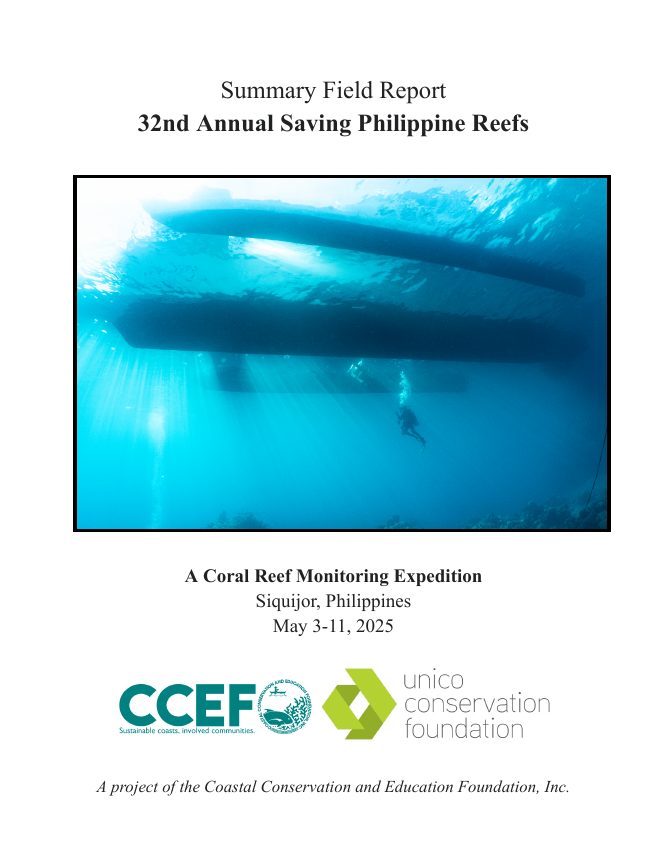| Title | 2025 Summary Field Report: 32nd Annual Saving Philippine Reefs – A Coral Reef Monitoring Expedition, Siquijor, Philippines |
| Publication Type | Report |
| Year of Publication | 2025 |
| Authors | White A, Tan N, Molina D, Davis R |
| Institution | Coastal Conservation and Education Foundation, Inc. |
| City | Cebu City |
| Abstract | In May 2025, the “Saving Philippine Reefs” (SPR) Expedition team embarked on their 32nd annual coral reef monitoring project at one of many prior CCEF survey sites in Siquijor, Philippines. The project was implemented by nine CCEF staff members with the help of nine international volunteers from the United States, Australia, and England. Many of the volunteers had participated in the annual SPR data collection prior to this trip and are experienced researchers or have technical expertise in the environmental field.
This report presents the findings from the 2025 Siquijor expedition and contributes to the growing dataset used to identify long-term trends in reef condition and inform science-based policy for improved MPA management. Live hard coral cover within MPAs in Siquijor ranged from 13.3% to 62.8% at 7-8 m depth, and from 15.7% to 62.7% at 2–3 m depth. The average live hard coral cover throughout the deeper and shallower sites were 38.88% and 33.99% respectively. No general trends in coral cover appeared across sites since 2017. Whereas some sites showed drastic declines in oral cover, likely due to storm damage; other sites seem to have gradually recovered despite recent storms, when compared with data from previous years. Fish biomass surveys taken between 7-8m depth at the same sites in 2025 ranged from 1.82kg/500m2 to 20.8kg/500m2and yielded an average biomass of 10.41kg/500m2. Fish biomass has increased gradually since the last Siquijor SPR surveys in 2017, though the lack of data prior to that makes long-term trends difficult to assess. Survey results revealed differences in substrate composition and fish community metrics across Siquijor’s MPAs. Caticugan stood out for its high fish biomass, density, and diversity, despite its relatively low coral cover. This contrast likely reflects strong enforcement of MPA boundaries and effective management at this site. In contrast, Catulayan recorded low values across all fish metrics, which may reflect challenges in enforcement and ongoing fishing pressure. MPAs in the municipality of San Juan generally had higher coral cover, while sites in Maria and Lazi exhibited greater proportions of abiotic substrate including sand and rubble. |
| File | SPR_Siqujior_2025 |

